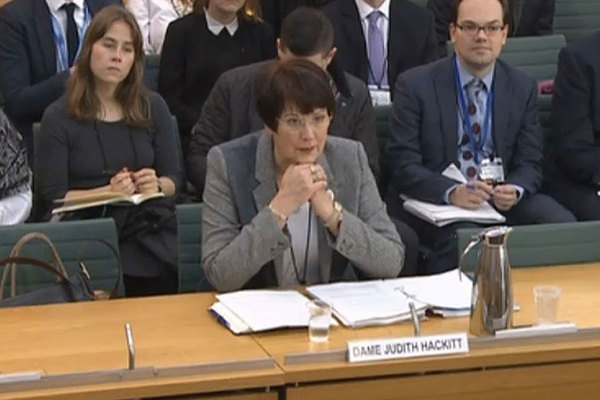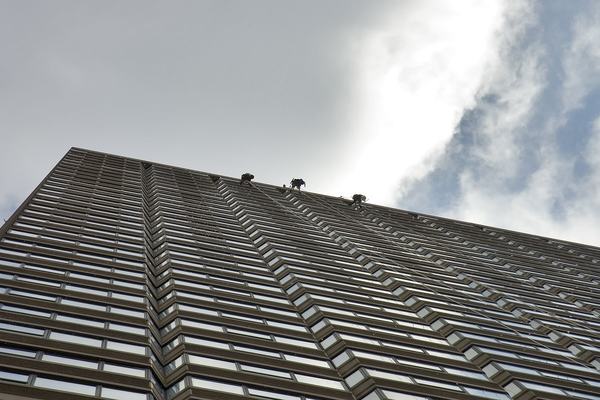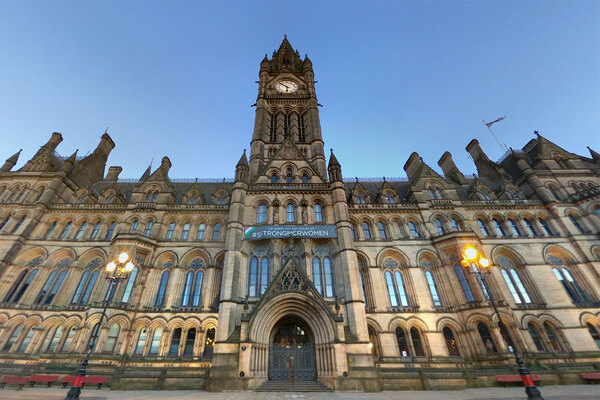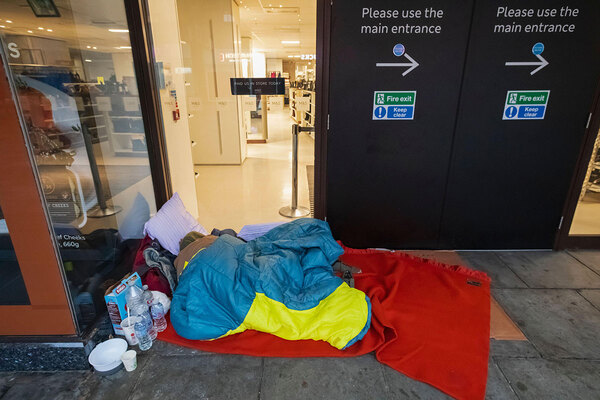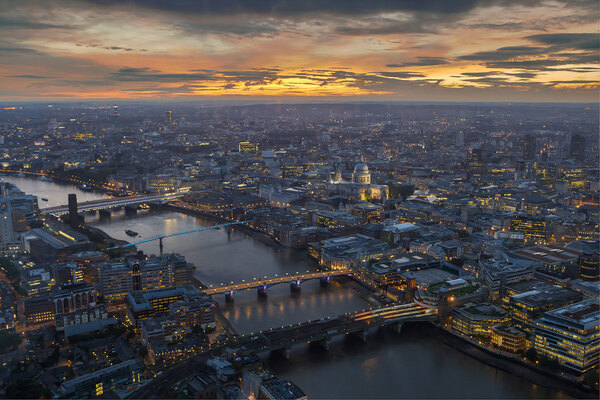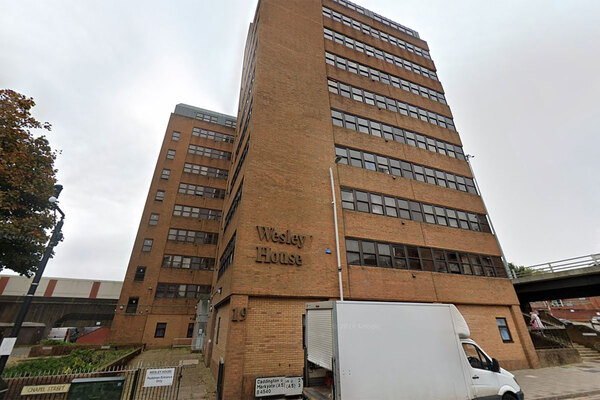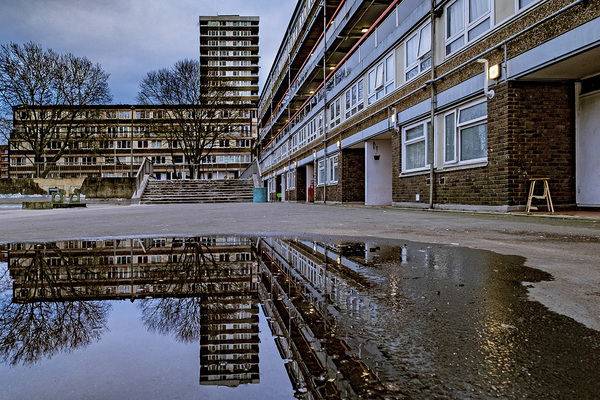You are viewing 1 of your 1 free articles
Grenfell Inquiry day 52: resident saved by son’s phone call
One of the last people to be rescued from Grenfell Tower was saved by a phone call from his son because smoke alarms in the tower’s communal areas immediately outside his home did not go off, the inquiry into the blaze has heard.
Antonio Roncolato, who had lived on the 10th floor of the building for 27 years, was finally rescued at around 6am having stayed in his flat. He was the first survivor of the blaze to give evidence to the inquiry.
He said that he was awoken by a phone call from his son, Christopher, who was returning home after a night shift, who said: “Get out of the house, the tower’s burning, I love you Pappy, get out.”
Mr Roncolato said he heard sounds outside the flat which sounded “like people screaming”, which he had initially assumed to be a party but later realised it was people shouting to get out.
He described hearing a “crackling sound” and seeing burning debris “raining down” from higher floors. He quickly got dressed and packed a rucksack with his laptop, documents, some watches, cash and his and his son’s passports.
He described how he had twice attempted to leave his flat, but had quickly given up after finding the landings filled with thick smoke, “like you’re going into a gas chamber”, he said.
“It was pitch black. My eyes were stinging; I was almost crying. It was impossible to breathe. The entire communal landing was full of smoke and I could not see anything. The smoke was very smelly and hot. It was suffocating,” he said.
He said that he did not think that there was a smoke alarm outside his flat, adding: “If there was, it would have gone off that night, but the only smoke detector that went off was inside my flat.”
Mr Roncolato, a hotel worker, told the inquiry how he had eaten a bowl of porridge to “keep my energy levels up” while he waited to be rescued.
“Throughout the night Christopher kept calling me telling me he loved me and to make sure I was OK,” he said. “I told him that it was not my time and I needed him to be strong. I was trying to reassure him.”
He was eventually rescued at around 6am by two firefighters who came to his flat and led him down the stairs. He said he wore his son’s swimming goggles and put a wet towel over his nose and mouth to keep the smoke out.
“I do not understand how the fire could have spread so quickly and why there was no communal alarm or other fire safety measures in the tower that could have saved more people,” he said. “This was despite residents reporting on numerous occasions their concerns about fire safety, but we were not listened to. We were ignored.”
He spoke about draughts which came through windows which had been fitted during the refurbishment of the flat in 2015 and 2016, and which on the night of the fire allowed smoke into his flat. He had filled in some of the gaps with plastic filler in order to stop the cold, he said.
The inquiry had previously heard that plastic fillers used around the windows and the new cladding panels, which were also fitted during the refurbishment, helped spread the fire.
Mr Roncolato also said that a concierge who had previously worked in the block was not reinstated after the refurbishment works had taken place. Residents had petitioned to have the concierge reinstated, he said.
He also said residents had meetings with the council about relocating gas boilers from within individual flats to the building’s corridors, which they were concerned would pose a fire hazard.
The tenant management organisation agreed to put some boilers in the flats, but “for those residents who did not speak up, they were bullied into having the new boiler installed in the hallway by the front door”, he told the inquiry.
The inquiry also heard from Maria de Fatima Alves, who had lived in the block for 19 years. She described the scene as a “horror film”.
After returning from a night out with friends, Ms Alves and her husband saw smoke in the fourth floor lobby and, realising there was a fire, she left the building while her husband went up to their flat on the 13th floor to get the couple’s two children.
Ms Alves said she saw “melting plastic” falling to the ground as she stood and watched the blaze, and witnessed a number of her neighbours coming out after her husband woke them up.
“I have every respect for the firefighters but I think that there was a lack of communication between those inside the tower and those outside,” she said.
“I still think about what I could have done more. I often wonder if I had stayed at the tower and buzzed people to wake them up and get them out whether more lives could have been saved,” she said.
She said she didn’t think she had ever read the fire notices posted in the building, and assumed that in the event of the fire she should exit the building immediately.
No one had ever told her what to do if a fire were to break out, she told the inquiry.
The Grenfell Tower Inquiry
Closing statements
Day 85: victims' lawyers attack the fire brigade
Further expert evidence
Including some additional evidence from emergency call handlers, bereaved and relatives
Day 84: further evidence from survivors and relatives
Day 83: swift evacuation of tower possible if residents alerted
Day 82: initial fire was extinguished but then returned to the flat
Day 81: overheating fridge-freezer most likely cause of fire
Day 80: fire doors installed did not match product tested
Day 79: resident advised to stay put despite fire in flat
Day 78: insulation and cladding material below required standard
Day 77: molten plastic spread blaze down tower
Day 76: 'stay put' should be dropped when fire spreads across floors
Other witness evidence
Police, ambulance, gas suppliers, council, TMO and call room operators give evidence
Day 75: call room operators give evidence
Day 74: further evidence from TMO officers
Day 73: TMO boss failed to pass information to firefighters
Day 72: fire finally extinguished when gas switched off
Day 71: further questions over stay put advice
Day 70: the police evidence
The bereaved, survivors and relatives’ evidence
Day 69: video shows smoke billowing through fire door
Day 68: KCTMO removed self closing mechanism and never replaced it
Day 67: gaps in cladding fixed with duct tape
Day 66: 'don't fix broken system with a sticking plaster'
Day 65: survivor dragged disabled man down nine floors to safety
Day 64: KCTMO 'did not replace broken fire door'
Day 63: foam insulation inside cladding 'exposed' says survivor
Day 62: father gives harrowing account of son's death
Day 61: council’s management organisation slammed for faulty electrics
Day 60: stay put advice ‘led to deaths’, residents say
Day 59: residents describe problems with new windows
Day 58: survivor describes how daughter saved his life
Day 57: firefighter evidence ‘a slap in the face’, says survivor
Day 56: relations with contractor were ‘toxic’
Day 55: resident 'never happy' with stay-put advice
Day 54: tenant gives evidence about housing association
Day 53: stay put advice 'felt like trap'
Day 52: resident saved by son's phone call
The firefighters’ evidence
Day 51: firefighter feared encouraging residents to jump
Day 50: the LFB commissioner
Day 49: fire chief reveals frustration over lack of building plans
Day 48: internal fire spread 'bigger story' than cladding
Day 47: fire officer considered evacuating crews over building collapse fears
Day 46: 'we were improvising' senior firefighter admits
Day 45: firefighter urged for abandonment of 'stay put' policy
Day 44: firefighter recalls radio signal difficulties
Day 43: call hander 'uncomfortable' with insisting residents stay put
Day 42: residents only told to leave if they called fire brigade back
Day 41: breathing equipment delay 'hampered rescues on upper floors'
Day 40: chiefs told firefighters to abandon policy
Day 39: firefighters reveal dramatic rescue of children
Day 38: firefighters issue aplogies to families
Day 37: council 'unable to provide tower plans'
Day 36: QC defends inquiry process
Day 35: Javid would welcome interim recommendations
Day 34: water from hose 'too weak' to reach the flames
Day 33: 'oh my god, we've been telling people to stay put'
Day 32: further fire fighter describes lack of equipment and low water pressure
Day 31: 'incredibly difficult' task of recording information outlined
Day 30: struggle to maintain control over rescue operation described
Day 29: fire service 'overwhelmed' by survival guidance calls
Day 28: 'the building beat us'
Day 27: firefighters 'forced to abandon plans to reach roof'
Day 26: poor signage hindered rescue efforts
Day 25: water pressure left firefighting equipment 'like garden hose'
Day 24: decision to abandon 'stay put' explored
Day 23: TV images 'could have assissted' rescue effort
Day 22: description of hectic scenes in the control centre
Day 21: account from the fire service 'nerve centre'
Day 20: firefighter describes 'huge volume' of calls from trapped residents
Day 19: firefighter 'given no training on cladding fires'
Day 18: evacuation would have been 'huge catastrophe'
Day 17: firefighters describe access and lift issues
Day 16: scenes of carnage likened to 9/11
Day 15: firefighters recount trauma of survival guidance calls
Day 14: firefighters describe spread of blaze
Day 13: firefighters recall radio difficulties
Day 12: "it was like a war zone"
Day 11: questions raised over fire fighters' radios
Day 10: watch manager emotional under questioning
Day nine: lead firefighter 'not trained in stay put policy'
The expert reports: authors give evidence to inquiry
Day eight: where the fire started
Day seven: what was in the cladding?
Day six: the cause and spread of the fire
Day five: expert highlights key issues
Day four: firefighters defend response to fire
Day three: council and contractors appear for the first time
Day two: lawyers for the survivors make their case
Day one: expert evidence released on cladding and stay put
The commemoration hearings
30 May: Grenfell Council 'recognised it should not house disabled victim above four storeys'
29 May: Anger on day six of the Grenfell Inquiry
25 May: Grenfell families 'forced to live in chimney with stay put policy'
24 May: Grenfell family complained about father being housed on 17th floor
23 May: Tributes to children on third day of Grenfell hearings
22 May: Emotions run high as Grenfell bereaved shown footage of the tower burning
21 May: Grenfell victims share tributes as inquiry opens
Never Again campaign
In the days following the Grenfell Tower fire on 14 June 2017, Inside Housing launched the Never Again campaign to call for immediate action to implement the learning from the Lakanal House fire, and a commitment to act – without delay – on learning from the Grenfell Tower tragedy as it becomes available.
One year on, we have extended the campaign asks in the light of information that has emerged since.
Here are our updated asks:
GOVERNMENT
- Act on the recommendations from Dame Judith Hackitt’s review of building regulations to tower blocks of 18m and higher. Commit to producing a timetable for implementation by autumn 2018, setting out how recommendations that don’t require legislative change can be taken forward without delay
- Follow through on commitments to fully ban combustible materials on high-rise buildings
- Unequivocally ban desktop studies
- Review recommendations and advice given to ministers after the Lakanal House fire and implement necessary changes
- Publish details of all tower blocks with dangerous cladding, insulation and/or external panels and commit to a timeline for remedial works. Provide necessary guidance to landlords to ensure that removal work can begin on all affected private and social residential blocks by the end of 2018. Complete quarterly follow-up checks to ensure that remedial work is completed to the required standard. Checks should not cease until all work is completed.
- Stand by the prime minister’s commitment to fully fund the removal of dangerous cladding
- Fund the retrofitting of sprinkler systems in all tower blocks across the UK (except where there are specific structural reasons not to do so)
- Explore options for requiring remedial works on affected private sector residential tower blocks
LOCAL GOVERNMENT
- Take immediate action to identify privately owned residential tower blocks so that cladding and external panels can be checked
LANDLORDS
- Publish details of the combinations of insulations and cladding materials for all high rise blocks
- Commit to ensuring that removal work begins on all blocks with dangerous materials by the end of 2018 upon receipt of guidance from government
- Publish current fire risk assessments for all high rise blocks (the Information Commissioner has required councils to publish and recommended that housing associations should do the same). Work with peers to share learning from assessments and improve and clarify the risk assessment model.
- Commit to renewing assessments annually and after major repair or cladding work is carried out. Ensure assessments consider the external features of blocks. Always use an appropriate, qualified expert to conduct assessments.
- Review and update evacuation policies and ‘stay put’ advice in the light of risk assessments, and communicate clearly to residents
- Adopt Dame Judith Hackitt’s recommended approach for listening to and addressing tenants’ concerns, with immediate effect
CURRENT SIGNATORIES:
- Chartered Institute of Housing
- G15
- National Federation of ALMOs
- National Housing Federation
- Placeshapers

